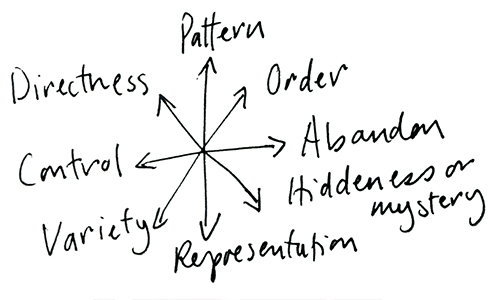Telling a Story. David Lucas - Children’s Book Illustrator and Writer
Tue 04 Aug 2009 by Angela_McKay

David says he likes making picture books. He always wanted to be an illustrator and has made his living since 2002 purely from his picture books. He loved drawing as a teenager and showed us some original drawings from that time. He drew obsessively, getting absorbed in creating whole worlds. Like many budding illustrators he spent a lot of time in his own company, quite isolated.
He went to work for a graphic design company as a teenager. They told him not to go to college but to stay there and they would teach him to be an illustrator in two years. Luckily, he didn’t listen. His college experience was rather mixed and he felt he had the rug pulled from him. He is not wholly supportive of the current art education system that requires you to question everything. It made him doubt his drawing line. David was a man looking for answers and he didn’t feel he was provided with many through the formal educational route. He resented the pressure to produce work that was trendy. He left college not knowing who he was. In his early 30’s his life fell apart and he went through a mini crisis. It made him examine all aspects of his life. He tried to define his work as an artist. He realised he wanted to make complete stories instead of fragmented ones which was the fashionable way at the time. For him the focus needed to be about telling stories.
Most of his picture books are autobiographical. His first book Halibut Jackson is about someone being painfully shy and wanting to blend into the background. However, in the process he wears more outlandish outfits in order to go unnoticed.
He did a reading of The Robot and the Bluebird. It was a very touching story. Everyone clapped at the end.
He likes to draw from the heart. He likes completeness. Completeness is a word that David uses a lot. It gives him a quiet sense of satisfaction. His narratives have a universal quality to them, like contemporary fairy tales.
He drew one of his storybook characters with marker pens on a flip chart in front of us and explained how he likes it to be simple. No PowerPoint, thank goodness. In order to communicate David feels that things can be reduced to essential geometric shapes. He then drew English alphabet letters and explained their origins from Egyptian pictograms. Each letter was originally representative of important things in the culture A=cow, B=house, M=sea.
David asked the audience what their definition of a good drawing was. This is a conundrum he has spent many years grappling with. His own definition is a balance between many opposites. There is a tension between the opposing demands. He believes that the balance is as near to the middle point as possible.
He gave a very intellectual appraisal of drawing. He cites classic writers and artists such as, Jane Austen, Shakespeare and Michelangelo as being successful in making their stories. He believes that there are answers to the question of what makes a good drawing compared with Art College, where he found none. Telling a story is vitally important to him.
He initiated a good debate on what’s important in drawing and making a story. He loves medieval art and respects the passion they had for their craft. He says back then everyone was an illustrator. He is disappointed that today’s illustrators are thought of as less important. For David it really has to matter; his heart and soul are in every project he undertakes. He believes that we should all strive to produce the best work we can at all times.
David has finally arrived a style of working that seems to satisfy both himself and his publishers. In the past his relationship with some of his editors has been ‘difficult’. He works for Walker Books now. His books have a strong sense of design and composition and are embellished with many decorative motifs. He communicates his stories with clarity.
It was a well-prepared and brilliantly executed one-hour talk. Everyone hung onto his every word. He went into extraordinary depth about the definition of drawing and what it is all about; how art school doesn’t have all the answers for its students. Since his own mini crisis he has asked himself why and found the answers within himself and luckily he was open and confident enough to share them with us. We thank David for taking the time to show us his work and provide an interesting and stimulating evening.
If you would like to see more of David’s work visit
www.davidlucas.org.uk
His next picture book Cake Girl is launched in October 2009.
Categories
Tweets from @bigillustrators and friends
Blog archive
- 2019
- 2018
- 2017
- 2016
- 2015
- 2014
- 2013
- 2012
- 2011
- 2010
- 2009


